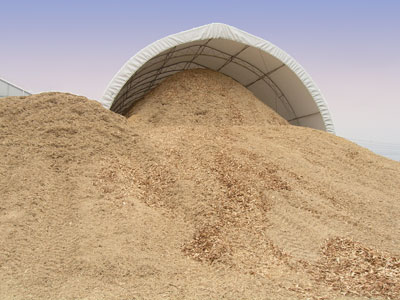
Item number four in the 10-step checklist, “Strengthening your Bioenergy
Project for Financing,” is the biomass feedstock supply.
Item number four in the 10-step checklist, “Strengthening your Bioenergy Project for Financing,” is the biomass feedstock supply. It is now time to discuss the three “S” words surrounding your biomass feedstock: Secure, Suitable and Sustainable.
 |
|
| Choose feedstock with the best margins. Advertisement
|
Even though you may be attempting to finance equipment such as a biomass boiler or a wood grinder, you will need to show that you have secure access to a suitable and sustainable biomass supply. You may roll your eyes as we enter into this debate, but rest assured that Canadian banks and lenders know that your entire project is dependent on a reliable, cost-effective feedstock supply.
Remember, the ultimate goal is to move your project to the head of the line and obtain suitable financing to launch your vision.
SUCCESS OF BIOMASS PROJECT WILL DEPEND ON FEEDSTOCK SUPPLY
■ Since feedstock supply is often a major stumbling block for funders, consumers and project developers, you should be prepared to take a proactive approach. You must be ready to answer the inevitable questions of what your feedstock will be and where and how you will get it.
The first “S” of ‘Security’ should be addressed by obtaining a written formal supply agreement with a reputable, local supplier.
A five-year signed supply agreement with pricing and minimum volumes can go a long way in helping to secure necessary financing. A bioenergy project totally reliant on only one source of feedstock will be at greater risk, so two supply contracts are even better. This contract will also allow you to negotiate a better feedstock price, as your supplier will benefit greatly from a long-term relationship and a guaranteed market.
An interested lender needs to know that both the feedstock supplier and bioenergy processor are committed to the project.
The second “S” of ‘Suitability’ can also be defined within the supply contract and should include details, such as acceptable moisture content ranges, particle size and rights of first refusal.
Also, by first defining the suitability of the incoming product, it will also be easier to decide which equipment is best for processing and where the marketplace will be for your end product.
As an example, there may be a great supply of recycled urban wood waste available, but it will not garner a premium grade wood pellet pricing. Instead, the recycled wood waste might be suitable for industrial grade chips, which have lower processing costs and revenues.
Conversely, you might have to pay more for a very dry, uniform high-quality feedstock, but you may find your chipping and drying costs may be greatly decreased.
It is not necessarily the cheapest feedstock that always wins the day; it is the product with the best margins.
DO YOU REALLY KNOW HOW MUCH BIOMASS YOU WILL REQUIRE?
■ The third “S” is ‘Sustainability,” and it is gaining a lot of attention these days as more and more people become interested in biomass energy.
Just check out the furor and misinterpretation caused by the recent release of the Manomet Centre for Conservation Sciences Biomass Report in Massachusetts. As a first step, I recommend that you identify how much material your specific project requires.
Recently a potential client expressed concern that their biomass boiler project might not be sustainable. A legitimate concern, but upon further questioning it became apparent that they did not know how many Oven Dry Tonnes (ODT) were required on an annual basis.
After doing a quick conversion from gigajoules (based on current heating bill) to Oven Dried Tonnes, we agreed that they only needed 300 tonnes per year and they own a very large community forest. Question asked and answered.
My advice is, try not to get drawn into the much larger international debate of biomass sustainability, but focus in on the specifics of your particular local project. You might be surprised to see that you have a tremendous amount of underutilized biomass in your specific area.
It can also be beneficial to hire a third party, independent, professional forester to verify your biomass supply projections and double-check that your feedstock supply is sustainable over the long term.
PLANNING SHOULD BEGIN WITH A SPREADSHEET
■ In my previous column (January 2011, pg. 20), entitled “Show me the money,” I suggested that project proponents build a financial plan in a computerized spreadsheet format.
This spreadsheet should be set up to handle various feedstock scenarios that look at break-even points for biomass procurement and processing costs. In reality, you might pay more for high-quality raw material, but the lower processing costs may make for a stronger business case.
After all, one of the key ingredients to long-term sustainability is profitability. If you are not able to sustain your business with an acceptable return on investment, then the importance of the other “S” words will be undermined.
In closing, do your research, and prepare your answers based on relevant and local data, because you already know what questions are going to be on the “Feedstock Supply Test” – Security, Suitability and Sustainable.
Note: True and false answers are not acceptable; prove that you have been studying and impress them with your concise answers and signed supply agreements.
Print this page